DP Matthew Libatique, ASC, LPS harnessed KODAK 35mm B&W/color filmstocks for 'Maestro,' Bradley Cooper's intimate biopic of Leonard Bernstein
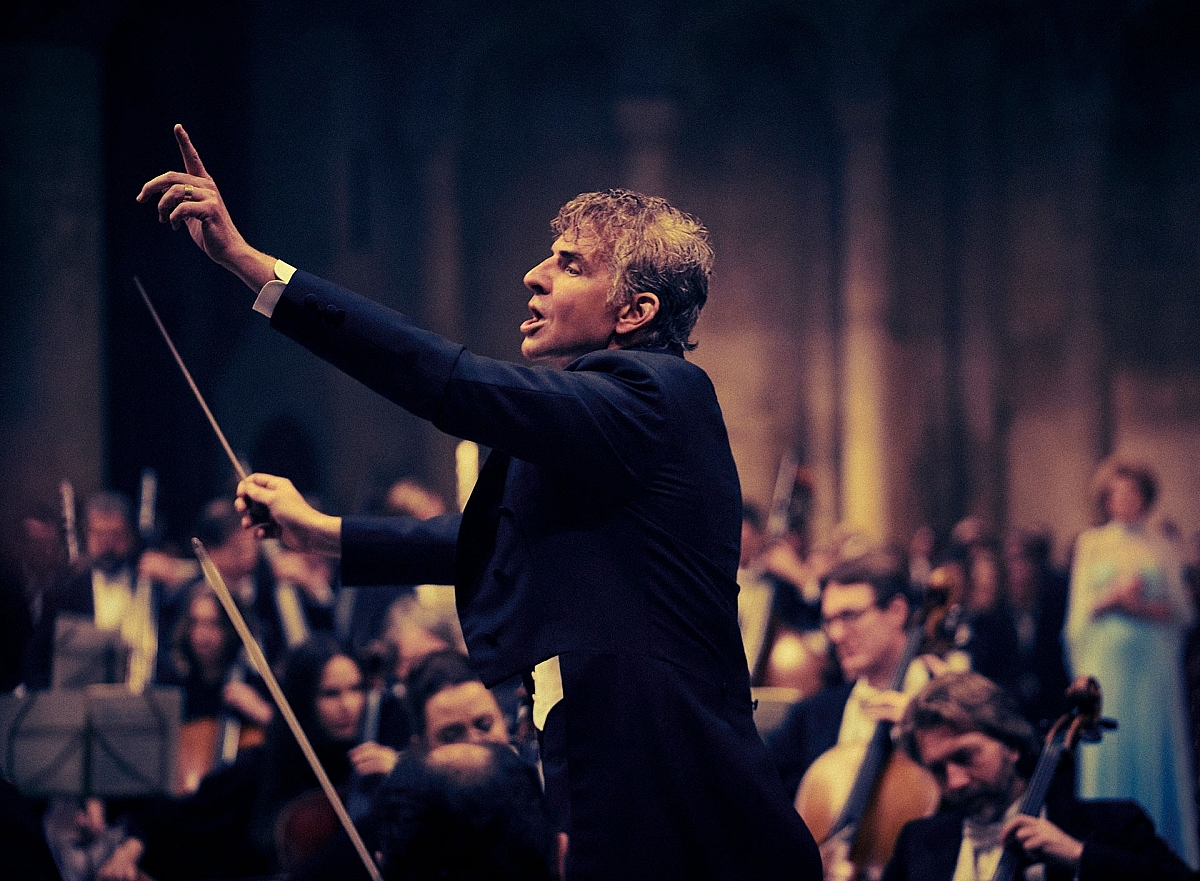
Bradley Cooper as Leonard Bernstein (Director/Writer/Producer) in Maestro. Photo by Jason McDonald/Netflix © 2023.
Shot on KODAK 35mm B&W and color filmstocks and framed in different aspect ratios, Maestro is much more than a straightforward biopic of the celebrated American composer and conductor Leonard Bernstein.
Rather, the compelling visual and auditory extravaganza dives headlong into the man behind the spotlight, with both joyous and heartbreaking turns to form a sweeping exploration of how Bernstein's complex marriage to actress Felicia Montealegre and his voracious bisexuality nourished his restless creativity and passion for music over many decades.
The film was directed by Bradley Cooper from a screenplay he co-wrote with Josh Singer, with Cooper starring as Bernstein, alongside Carey Mulligan as Felicia, and Matt Bomer, Maya Hawke and Sarah Silverman in supporting roles. Cooper also produced the film with Steven Spielberg and Martin Scorsese.
Maestro premiered at the 2023 Venice Film Festival, followed by screenings at other high-profile events, and began a limited theatrical release before streaming on Netflix in December 2023.
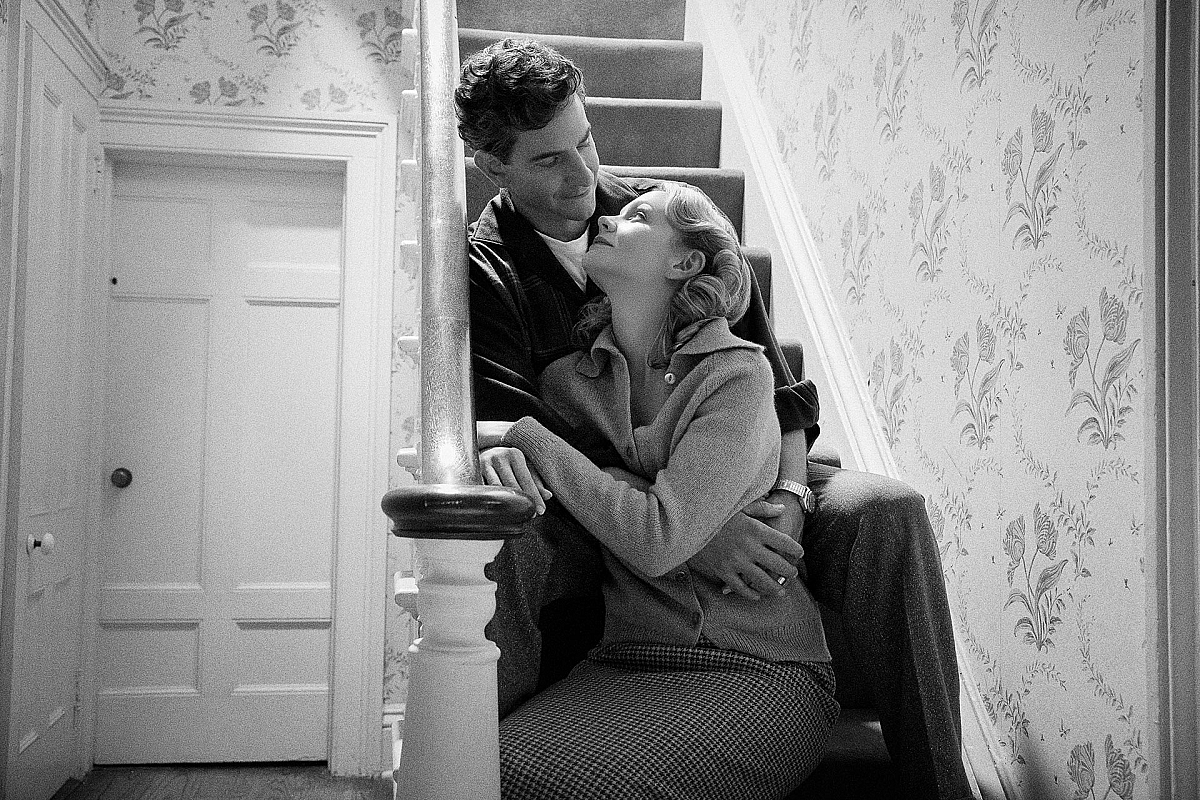
Bradley Cooper as Leonard Bernstein (Director/Writer/Producer) and Carey Mulligan as Felicia Montealegre in Maestro. Photo by Jason McDonald/Netflix © 2023.
Along with critical praise for its central performances and stirring tribute to Bernstein's talent and legacy, the film was nominated for numerous accolades during the 2024 awards season, including seven Academy Awards, with prestigious Oscar®, BAFTA, ASC and BSC Awards nods given to its strikingly imaginative cinematography by Matthew Libatique, ASC, LPS.
Libatique is known for his collaborations with high-profile directors such as Jon Favreau, Spike Lee, Joel Schumacher and Darren Aronofsky, and is no stranger to shooting on film, with Pi (1998), Requiem for a Dream (2000), The Fountain (2006), Iron Man (2008), Black Swan (2010), Iron Man 2 (2010), Noah (2014) and Mother! (2017) among his many 16mm and 35mm credits.
Maestro represents Libatique's second scintillating cinematographic collaboration with Cooper, following their work together on A Star is Born (2018), and is his third Academy Award® nomination, after Black Swan and A Star is Born.
The DP reveals that it was during production on A Star Is Born when he first learned from Cooper about the project that would eventually develop into Maestro.
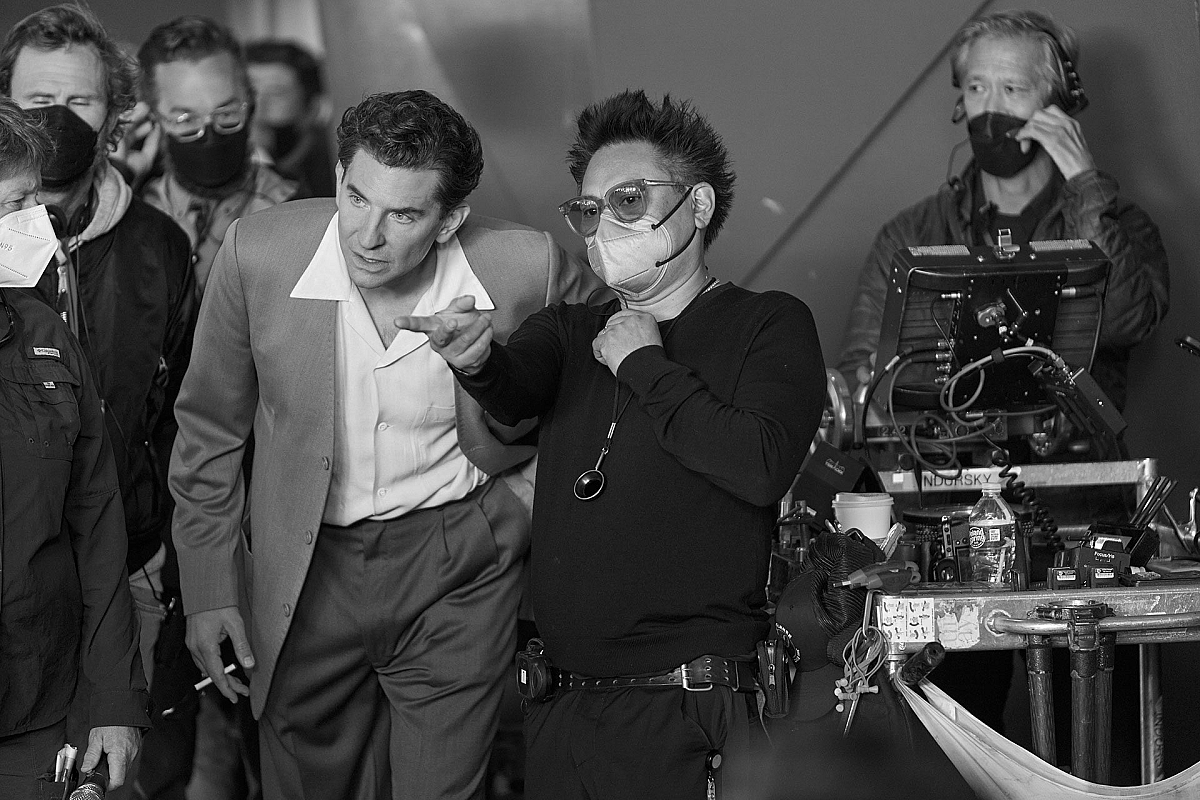
(L to R) First Assistant Director Michele 'Shelley' Ziegler, Key Grip Kevin Lowry, Director/Writer/Producer Bradley Cooper, Cinematographer Matthew Libatique and Camera Operator Scott Sakamoto on the set of Maestro. Photo by Jason McDonald/Netflix © 2023.
"I knew about Bernstein's iconic work and stature but not much at all about his personal life beyond the limelight of his fame," says Libatique. "I initially assumed the movie would be more about Bernstein the conductor and composer, but soon discovered it was more about him as a married man, and that it would be just as much about Felicia as it would be about him.
"So, I was really excited to delve into that and to consider how to visually tell the story from these points of view. Bradley and I started talking about shooting it really early on, thinking about the format, the framing, the aspect ratio and the overall aesthetics."
Libatique says he did not reference other movies for the production but did take creative inspiration from the plethora of stills, plus film and video footage, of Bernstein's life and times, imbibing the reality of the lighting. He also absorbed the candid naturalism in the work of stills photographers such as Elliot Erwitt and says he was influenced by cues in Cooper's script and his modus operandi as a director.
"Bradley knows about lenses and understands how to maximize performances through the camera," he says. "The screenplay was very well written and had brief descriptions explaining different shots and how the camera might react, or not react, depending on the moment and the emotion in the scene."
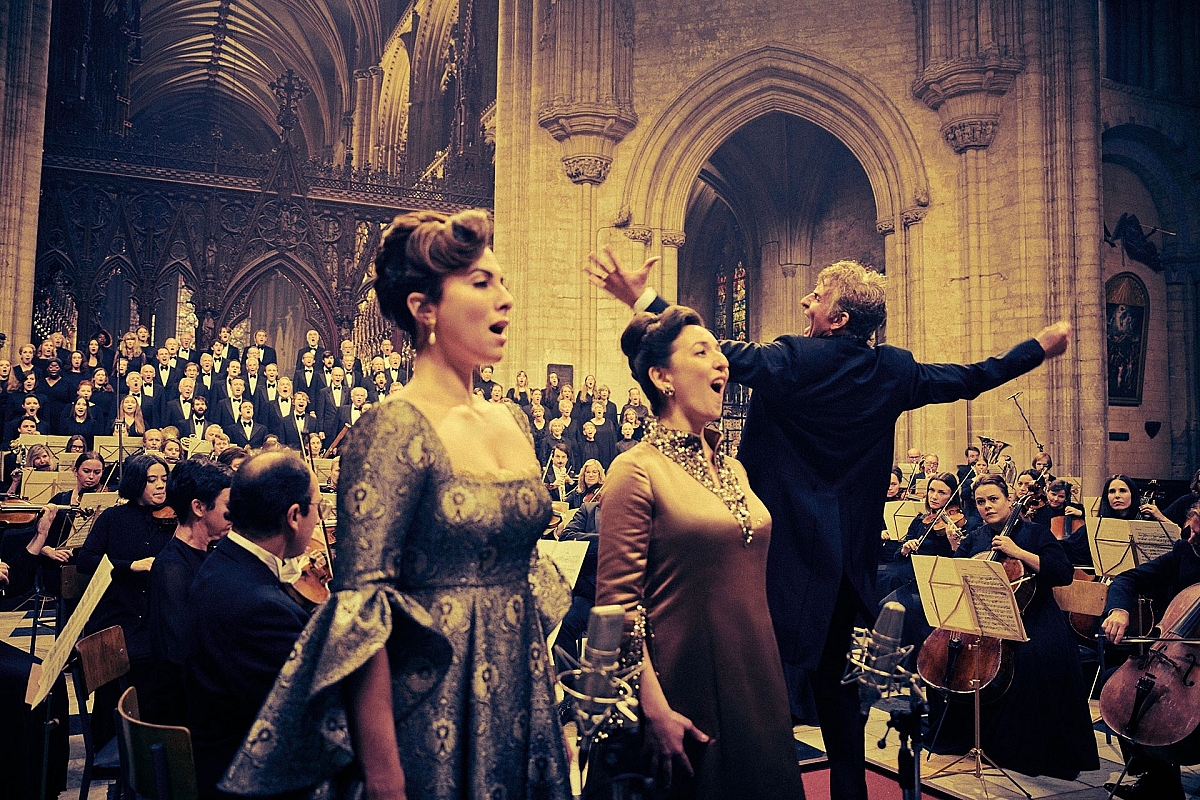
Soloists Isabel Leonard and Rosa Feola with Bradley Cooper as Leonard Bernstein (Director/Writer/Producer) in Maestro. Photo by Jason McDonald/Netflix © 2023.
As examples, the DP mentions several impressive set-pieces, including one in the opening sequences, where the camera tracks above the young Bernstein dashing from his apartment to seize his big break conducting the New York Philharmonic from the stage at Carnegie Hall. There's also the thrilling recreation of Mahler's Symphony No.2, known as the Resurrection Symphony, originally conducted by Bernstein in Ely Cathedral, UK, in 1973, where the camera drifts over the orchestra, before wrapping around the conductor to reveal Felicia standing in the wings.
By contrast, some of the most moving scenes are the ones with the least amount of camera movement, such as the near-static frames when Felicia approaches the end of her life with terminal cancer while being cared for by the heartbroken Bernstein.
Libatique reveals that the decision to shoot Maestro on 35mm film evolved during the testing phases of the production.
"Bradley left me in no doubt about his passion for the project and was trying to figure out how he could transform himself into Leonard Bernstein. We shot numerous tests where he was in full makeup, on film and digital, with various lenses, in different formats, in color and black & white, and we expected the final movie would probably be a hybrid of film and digital.
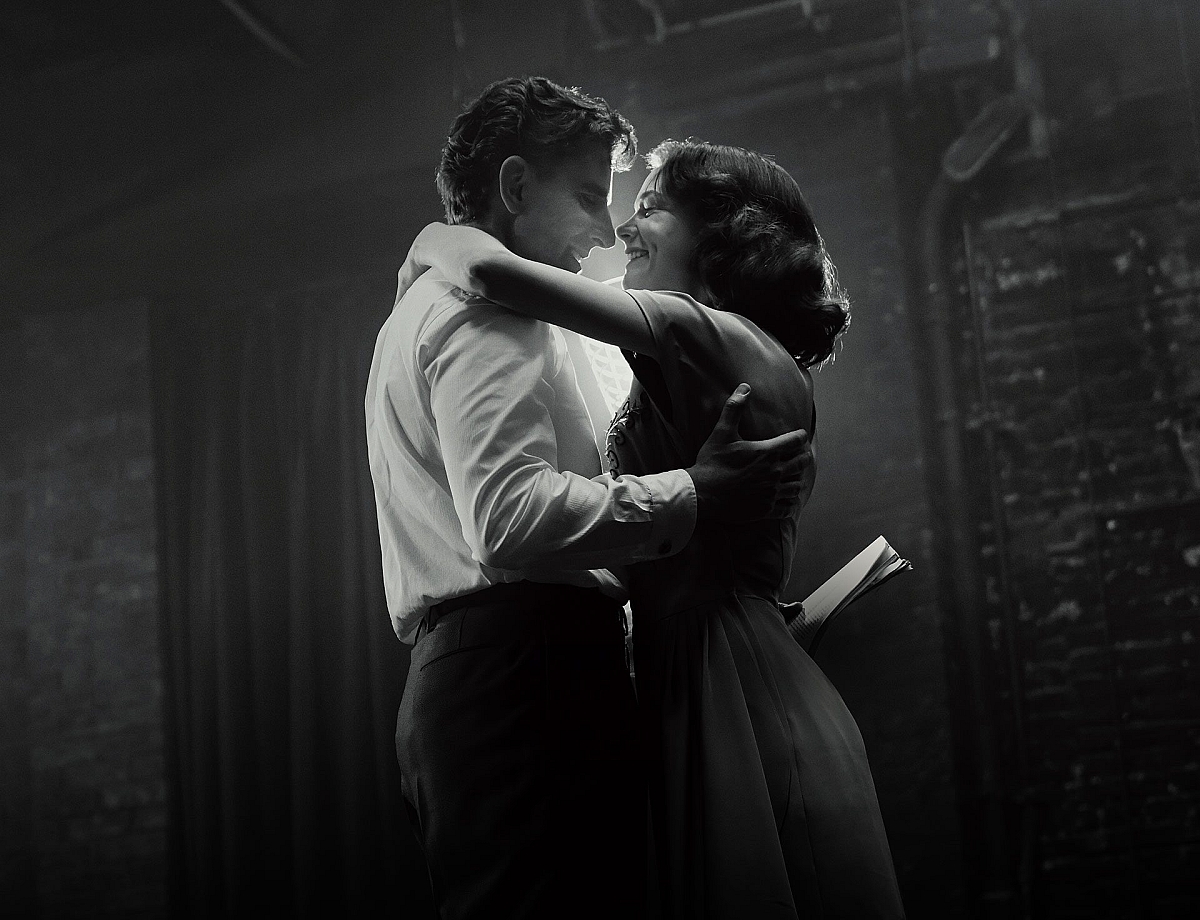
Bradley Cooper as Leonard Bernstein (Director/Writer/Producer) and Carey Mulligan as Felicia Montealegre in Maestro. ©2023 Netflix.
"However, the moment when we realized the production had to be only on film was when we tested the scene in which Felicia takes Lenny into the theater where she is performing in a play. We lit it with a single light bulb on the stage and shot it on 35mm black & white. There was something about that scene, the texture and the mood, that transported both Bradley and I, and he then pushed for film for the whole movie."
Filming began in May 2022, taking in the famous Tanglewood concert venue in the Berkshire Hills of western Massachusetts, and Bernstein's country home in Fairfield, Connecticut, which Libatique says, "is a wonderful place to be. You can still feel his energy there."
Locations in New York City included Carnegie Hall in Midtown Manhattan, St. James Theater off-Broadway, and the Lincoln Center on the Upper West Side of Manhattan. Filming also took place at Ely Cathedral, England, for two days where the London Symphony Orchestra assembled to shoot the Resurrection Symphony. Sets of Bernstein's different apartments, with backdrops specially made from separate plate shoots, were constructed on stages at Steiner Studios in Brooklyn.
The first half of Maestro – which focuses on Bernstein's meteoric ascent of the classical music hierarchy, his budding romance with Felicia and clandestine affair with David Oppenheim – was shot in black & white and framed in 1.33:1 aspect ratio to fulfil Cooper's desire to capture young Bernstein's indefatigable bravura in the razzle-dazzle of old Hollywood talkies.
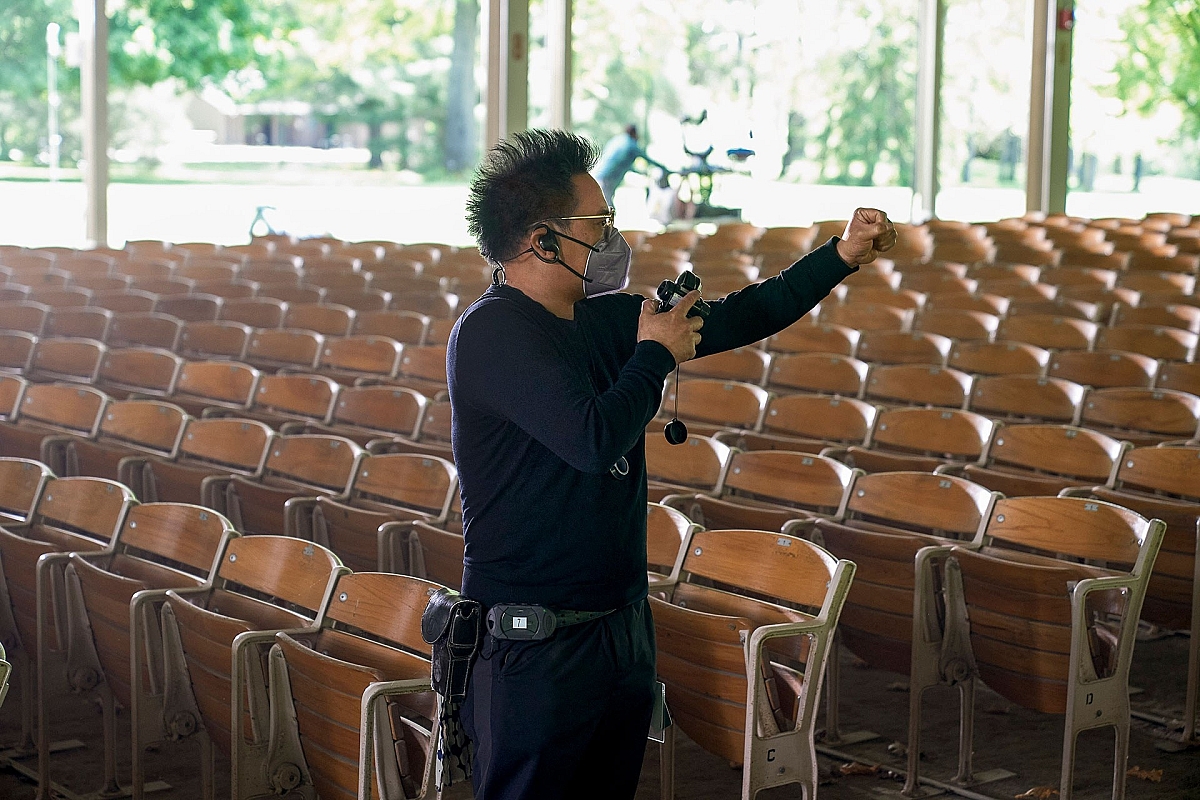
Director of Photography Matthew Libatique on the set of Maestro. Photo by Jason McDonald/Netflix © 2023.
Libatique says the shift into color was a natural transition point to mark the changing dynamic of Bernstein's relationship with Felicia – after his bisexuality is exposed to her and the couple's marriage becomes a stand-off – while also portraying his professional success and the warmth of familial love that now surrounds them. The change of aspect ratio to 1.85:1 and use of negative space in the framing of the scenes after Felicia's death were designed to evoke the sense of Bernstein's loneliness in the latter stages of his own life, as Felicia had previously prophesied would happen.
Libatique shot Maestro with Panavision Millennium XL2 35mm lightweight, sync-sound film cameras fitted predominantly with PVintage series lenses, whose sharpness was specially detuned under the auspices of Guy McVicker and the lens team at Panavision, to bring a softness to the image along with gentle halations. He also used Zeiss Super Speed MKII optics to encourage flaring in certain scenes and harnessed Panavision Primo primes to fill gaps in his chosen lens set. The camera and lens packages were provided by Panavision New York.
The movie's black & white sequences were filmed entirely on 35mm EASTMAN DOUBLE-X Black & White Negative Film 5222. The color section was shot on KODAK VISION3 stocks, with 35mm KODAK VISION3 200T Color Negative Film 5213 used for day exteriors/interiors, and KODAK VISION3 500T Color Negative Film 5219 for night/low-light scenes. Film processing, dailies and 4K scanning were done at FotoKem in Los Angeles under the supervision of Mark van Horne, its director of production services. The final color grade was completed at Company3 in Lost Angeles by senior colorist Stefan Sonnenfeld.
"The black & white DOUBLE-X 5222 has punchy contrast and lovely subtleties in tone, but I quickly realized during testing that I needed more light than I thought I would for a good exposure. I've become used to bouncing light using soft LEDs or working in very low light levels when shooting digital, but this was the exact opposite," Libatique explains.
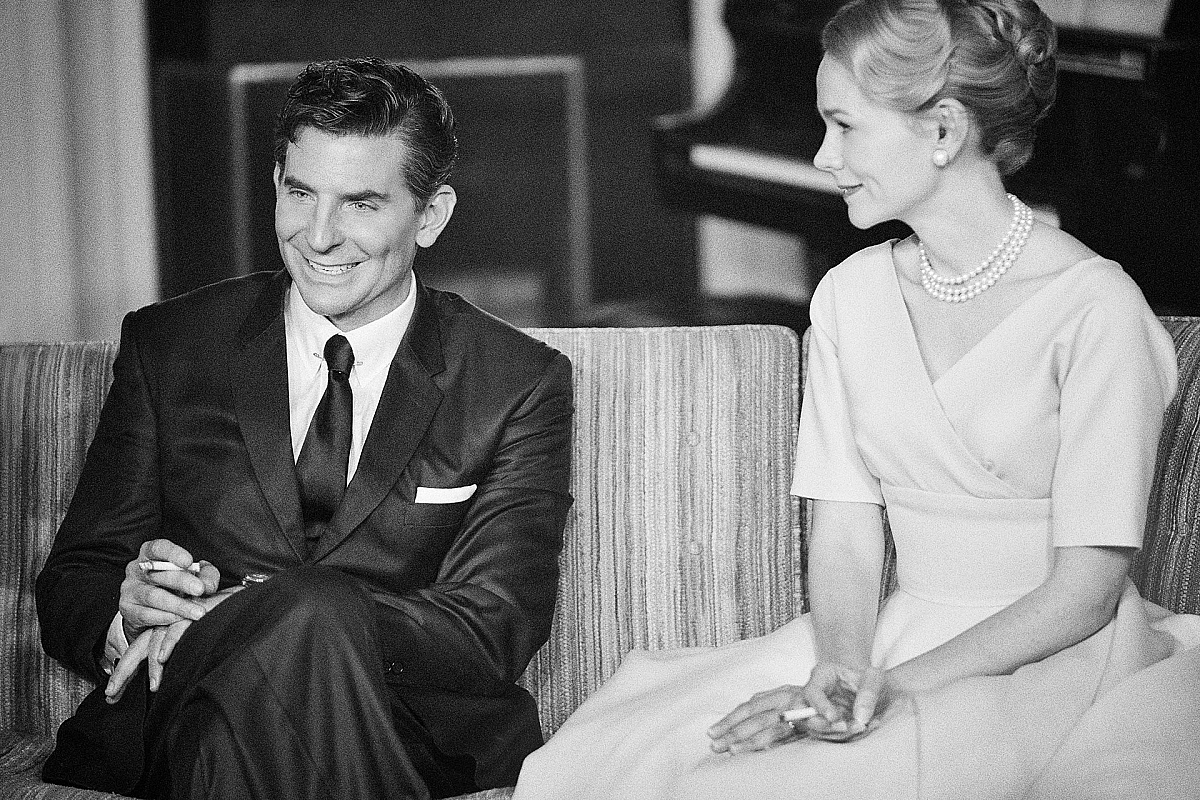
Bradley Cooper as Leonard Bernstein (Director/Writer/Producer) and Carey Mulligan as Felicia Montealegre in Maestro. Photo by Jason McDonald/Netflix © 2023.
"So, I needed much greater levels of light to get enough exposure on the black & white section of the movie. I started to get the results I wanted when I began using bigger lights – old Tungsten lamps, like 5Ks, 10Ks and 20Ks, where you have to use gloves to maneuver them – and when I pushed the illumination through diffusion rather than bouncing off surfaces. I also learned that when shooting with the DOUBLE-X 5222, unless you have a black, anodized pressure plate in the camera, there's a lot of light refraction resulting in lines on the negative. So, the cameras had to be modified for that."
As for shooting the color section of the film, he remarks, "I decided not to use Kodak's daylight stocks, as I was looking for something nostalgic along the lines of Kodachrome. I knew the two Tungsten stocks would match together really well in terms of grain and texture, and that they would also soak up the color in the production design by Kevin Thompson and the wardrobe by Mark Bridges.
"I remembered really liking the color rendition of the previous generation VISION2 200T 5217, when I rated it at 400ASA. So, I tried that again, and think the under-exposure worked really well in accentuating the nostalgic feeling we wanted."
Production on the film often involved two cameras. While Libatique operated a number of handheld scenes himself, Scott Sakamoto worked as the main A-camera operator, assisted by Aurelia Windborn as focus puller, with Colin Anderson on B-camera, supported by Tim Metivier. Kevin Lowry headed the grip team, with John Velez ICLS working as the gaffer on the US-based shoot, and Perry Evans was the gaffer when the production shot in the UK.
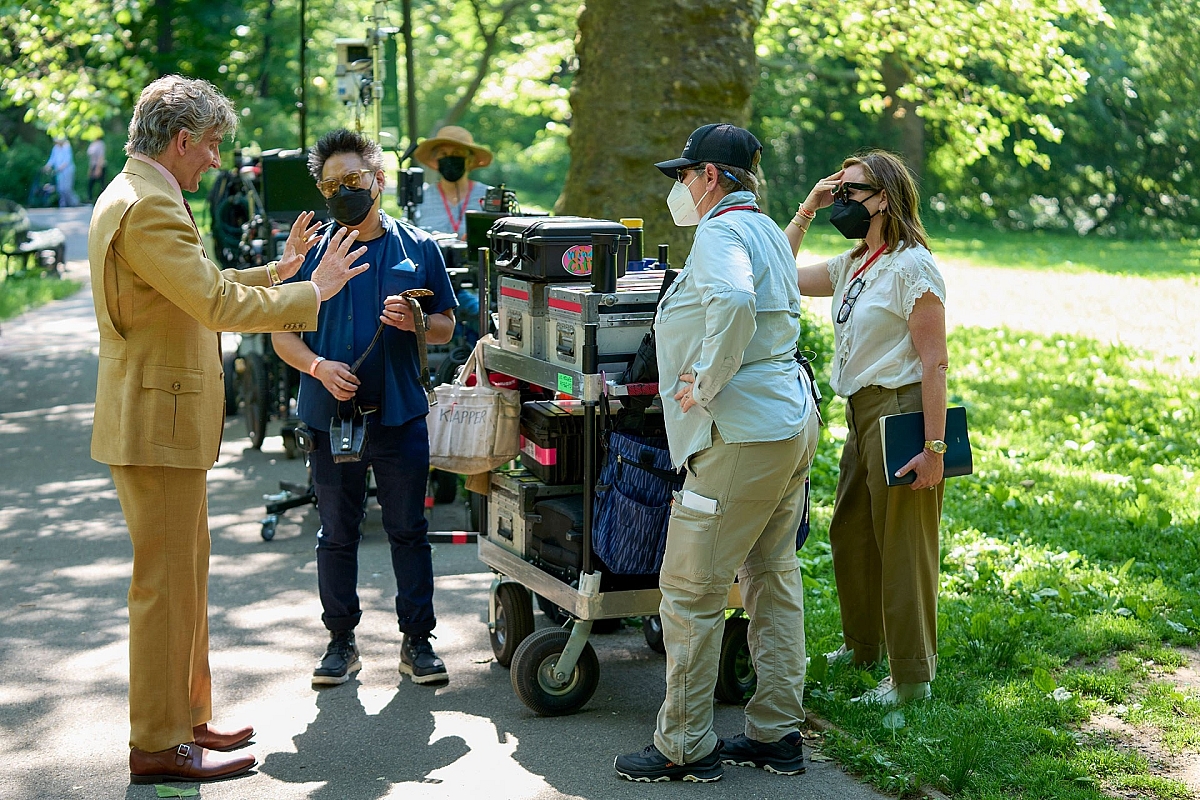
(L to R) Bradley Cooper as Leonard Bernstein (Director/Writer/Producer), Cinematographer Matthew Libatique, First Assistant Director Michele 'Shelley' Ziegler and Producer Kristie Macosko Krieger on the set of Maestro. Photo by Jason McDonald/Netflix © 2023.
While Maestro has been noted for its imaginative, daring and bold cinematographic choices, Libatique modestly says he was essentially following Cooper's creative vision.
"Bradley is one of the best motivators for me – as an actor and as a storytelling director – because he's so in tune with the meaning of the camerawork and the lighting. There's always something fresh about his ideas and anything is possible, whether that's using a particular lens, the way the camera might move, or how the light needs to fall.
"For example, the moment where we see Felicia very small, standing in the wings of theater enveloped by Lenny's giant shadow as he conducts, was Bradley's beautiful metaphor about the nature of their relationship. But as much as people have said my work is daring or bold or inventive, a lot of it was just responding to what Bradley envisioned.
"If anything, my philosophy was about keeping the set as open as possible for the performers and allowing the camera to react fluidly to them dependent on the moment and the emotion in the scene. Which created plenty of challenges and no lack of anxiety."
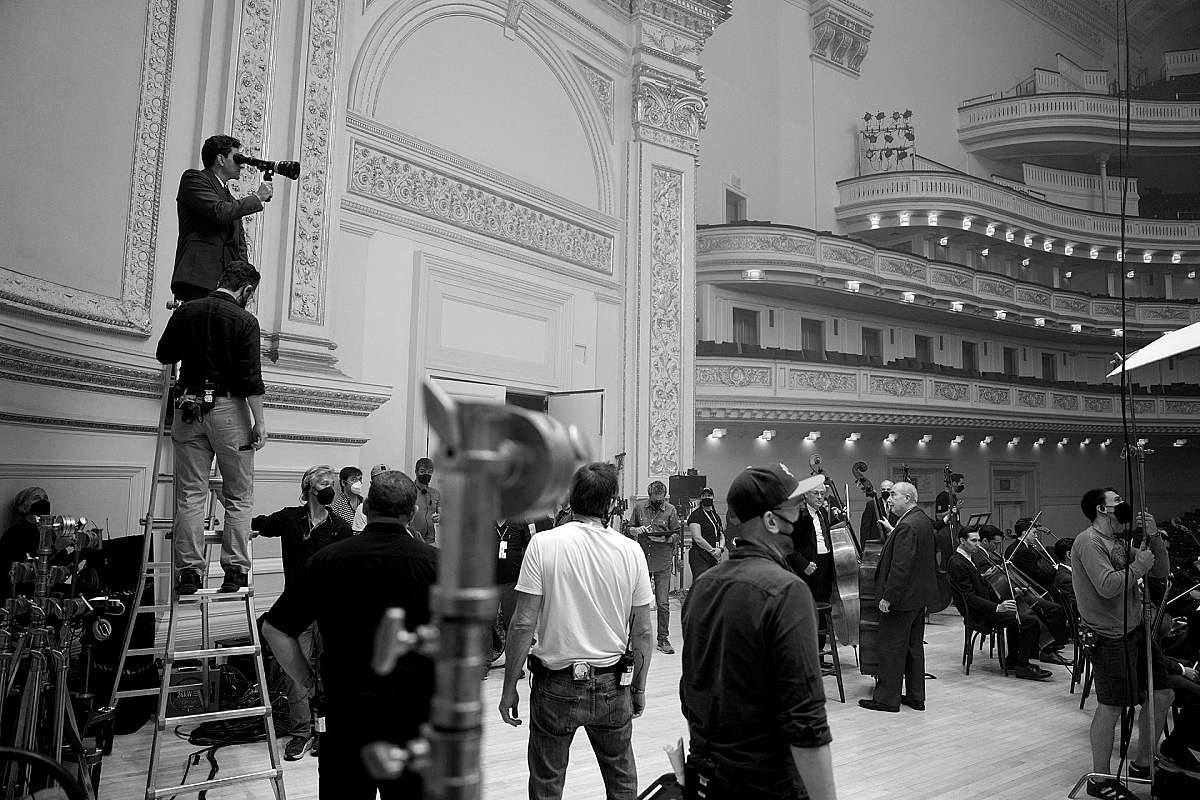
Director/Writer/Producer Bradley Cooper on the set of Maestro. Photo by Jason McDonald/Netflix © 2023.
He freely admits to concerns surrounding the logistics of installing, coordinating and choreographing the camera moves – between a 45-foot Scorpio crane with a Libra head and an overhead cable cam – for young Bernstein's dramatic entry to Carnegie Hall. Further apprehension came when filming the fantasy ballet sequence, in which Cooper dances, that would feature in the Broadway musical On the Town.
"There were no shot lists or storyboards for that routine, and we filmed in chronological order over the course of four days," Libatique explains. "It was all about following what Bradley had in his mind, chasing him with light, with the camera, until we got to the end. That represented a lot of hard work from a lot of people and was one of the toughest parts of the shoot for me. But I think it really paid off."
Shooting Bernstein conducting the Resurrection Symphony in the cavernous knave of Ely Cathedral was not without its concerns either.
"We arrived there several days before the shoot. Bradley and I walked around with a finder and different lenses to look at compositions, positions and timings of the camera, as it would move over the orchestra, drift into a dramatic mid-shot of Lenny at the height of his musical powers, before eventually wrapping around to reveal Felica.
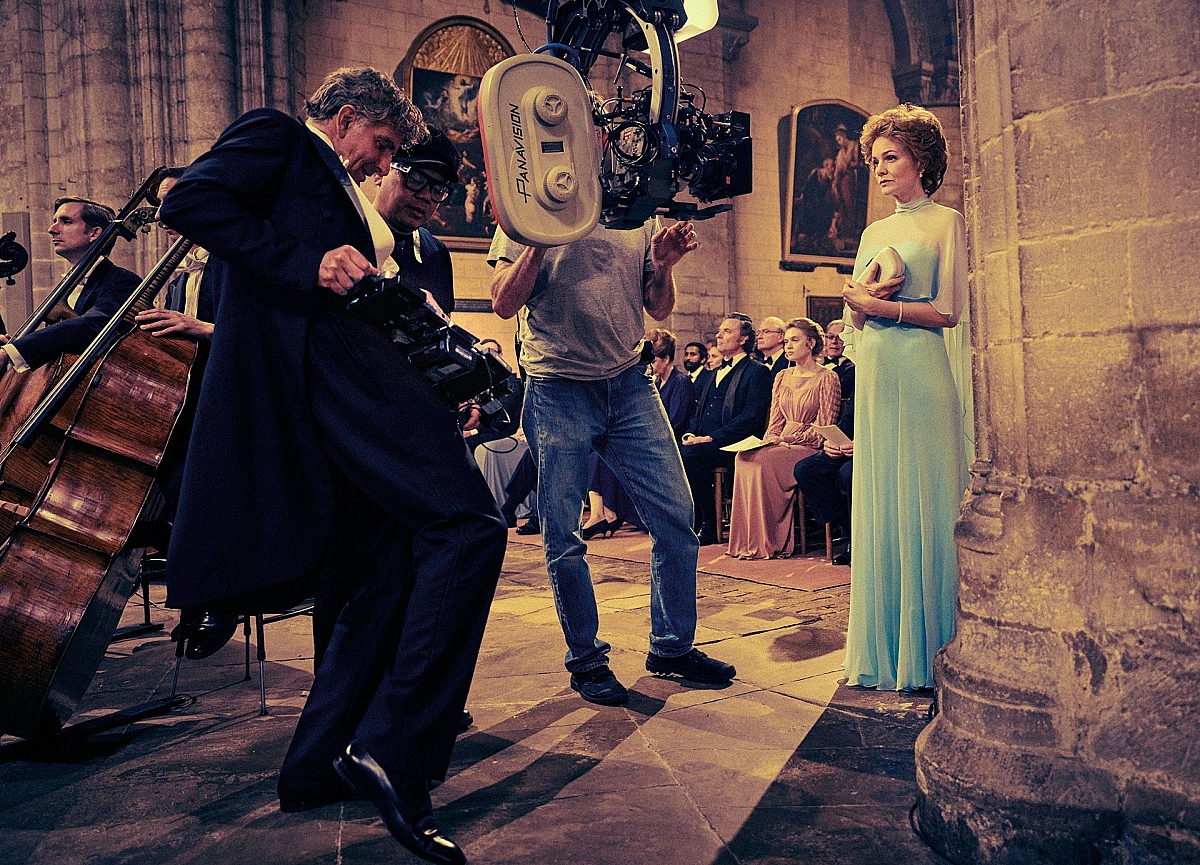
Bradley Cooper as Leonard Bernstein (Director/Writer/Producer), Cinematographer Matthew Libatique and Carey Mulligan as Felicia Montealegre on the set of Maestro. Photo by Jason McDonald/Netflix © 2023.
"The London Symphony Orchestra were rehearsing during our pre-light. The entire crew stopped working, and I sat down in one of the front pews to watch and listen. I was mesmerized by the incredible acoustics of the space, and I just couldn't believe the artistry of the musicians right there before me, to the extent that I became rather terrified about the technicalities capturing all of that visually.
"Luckily, we were shooting on color film at 500ASA, and my gaffer, Perry Evans, had worked in this space before. We employed two balloons and had a variety of Tungsten lights in the wings. We also rigged a number SkyPanel S60s to an existing lighting rig to give the sense of the sheer volume of the cathedral. The timings of the camera worked perfectly, and while I might have been anxious, I am so happy with how it turned out. It's a wonderful sequence."
Reflecting on his experience of shooting Maestro, he says, "There were plenty of challenges to put Bradley's vision on the screen. While very little was joyous when shooting, it's joyous now."
And of shooting on 35mm, "I really like the process of shooting film and always enjoy the results. It's simpler to shoot on film than digital, where there's a lot of additional technology that sometimes gets in the way. Film is much more streamlined. It's also intimate and personal because you're one of only a few who has control over the image, unlike digital where a lot more people can give their opinion of the images. I am very happy with what we all achieved."